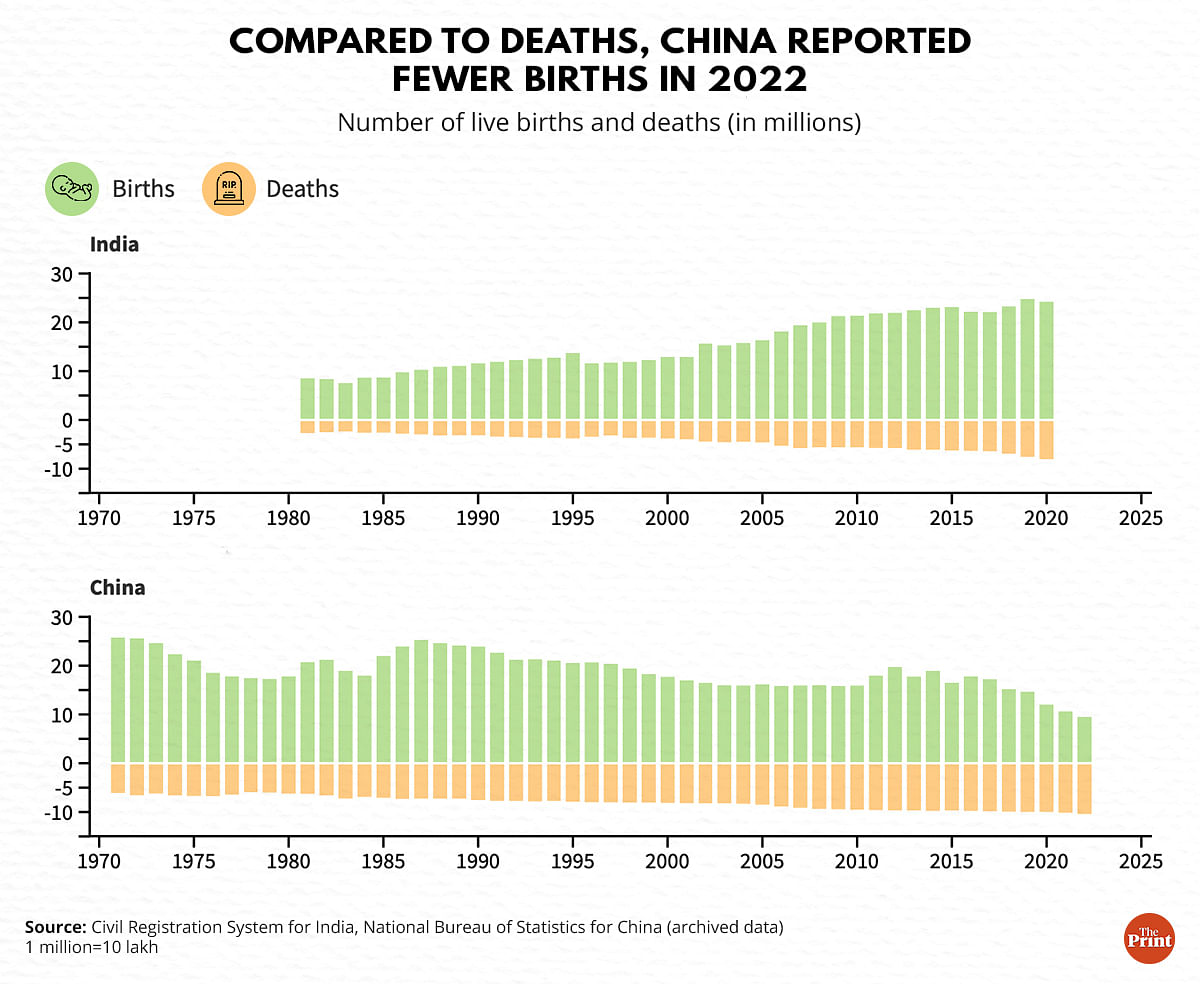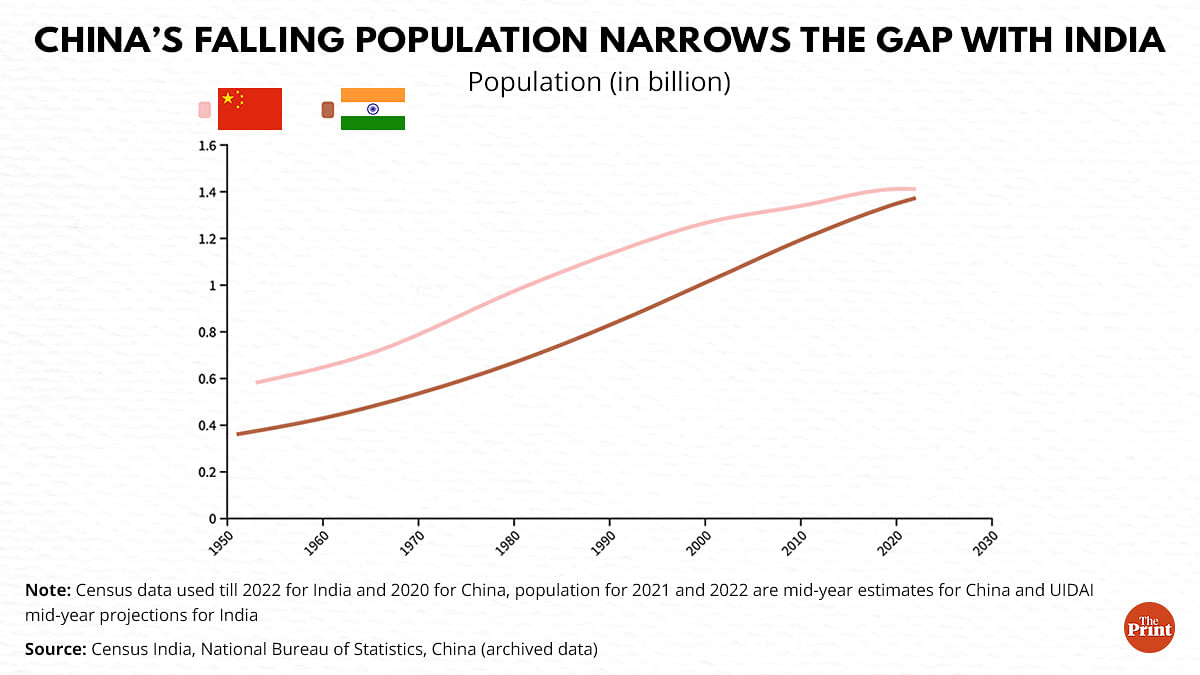New Delhi: China’s population has declined for the first time in 61 years, statistics released by its National Bureau of Statistics (NBS) Tuesday show. Data by China’s NBS also indicates that the gap between the most populous country in the world and India, which is second-most populous, has narrowed to less than 40 million (4 crore) people.
For this report, ThePrint has relied on data from other sources since the website of China’s NBS remains blocked in India.
China’s mid-year population reportedly dropped to about 1411 million (141.1 crore) in 2022 from 1412 million (141.2 crore) in 2021 — a decline of about 0.56 million (5.6 lakh) people within a year. The numbers sent ripples around the world of fears that this marked the beginning of a decline for the world’s second-largest economy.
The last time the country’s population witnessed a decline was in the 1960s under Mao Zedong’s leadership, during the Great Chinese Famine.
A fall in China’s population, and a corresponding rise in its senior citizen populace, has led to fears that its dependency ratio — a measure of the share of the population not actively earning an income — could soon rise. This, in turn, could not only impact the Chinese people’s purchasing power but impact China’s Gross Domestic Product (GDP) growth.
Though China has been reporting an annual population growth of less than one per cent since 1998, this is the first time that the absolute number of people in China is witnessing a downward trend.

Statistics released by the NBS show that the number of births in China dropped significantly in the past three years, while the number of annual deaths rose. Importantly, the annual ratio of live births in China has been declining since well before 2022.
In 2020, China reported 12.02 million (1.2 crore) births against 9.97 million (99.7 lakh) deaths. This means that for every 100 deaths reported in China that year, the country recorded 120 new births.
While the ratio slipped further in 2021 with 105 births per 100 deaths, it flipped in 2022.
In 2022, China reported 10.41 million (1.04 crore) deaths, which was 0.85 million (8.5 lakh) higher than the number of births that year — rounding up to a ratio of 92 births per 100 deaths.
Also Read: Tensions high, but India’s lapping up Chinese goods. Why trade deficit’s hit record $101 bn
Gap with India reducing
Though India has not conducted a Census since 2011 and the latest national Census was delayed due to the Covid-19 pandemic, the Unique Identification Authority of India (UIDAI) does give one a mid-year population projection by way of its Aadhaar penetration statistics.

For 2022, India’s mid-year population, around August, was reported to be 1,327 million (132.7 crore), which means the gap between China and India’s populations narrowed down to 3.8 crore persons last year.
Experts cited by the Associated Press believe that China’s demographic crisis could be bigger than previously thought as the country has ‘become older before it became rich’. The report also said that despite China scrapping its signature ‘one-child’ policy, the higher cost of raising children could be one reason why the Chinese are not having more children.
(Edited by Amrtansh Arora)
Also Read: China finally releases Covid data but citizens don’t believe it’s just 60,000 deaths



